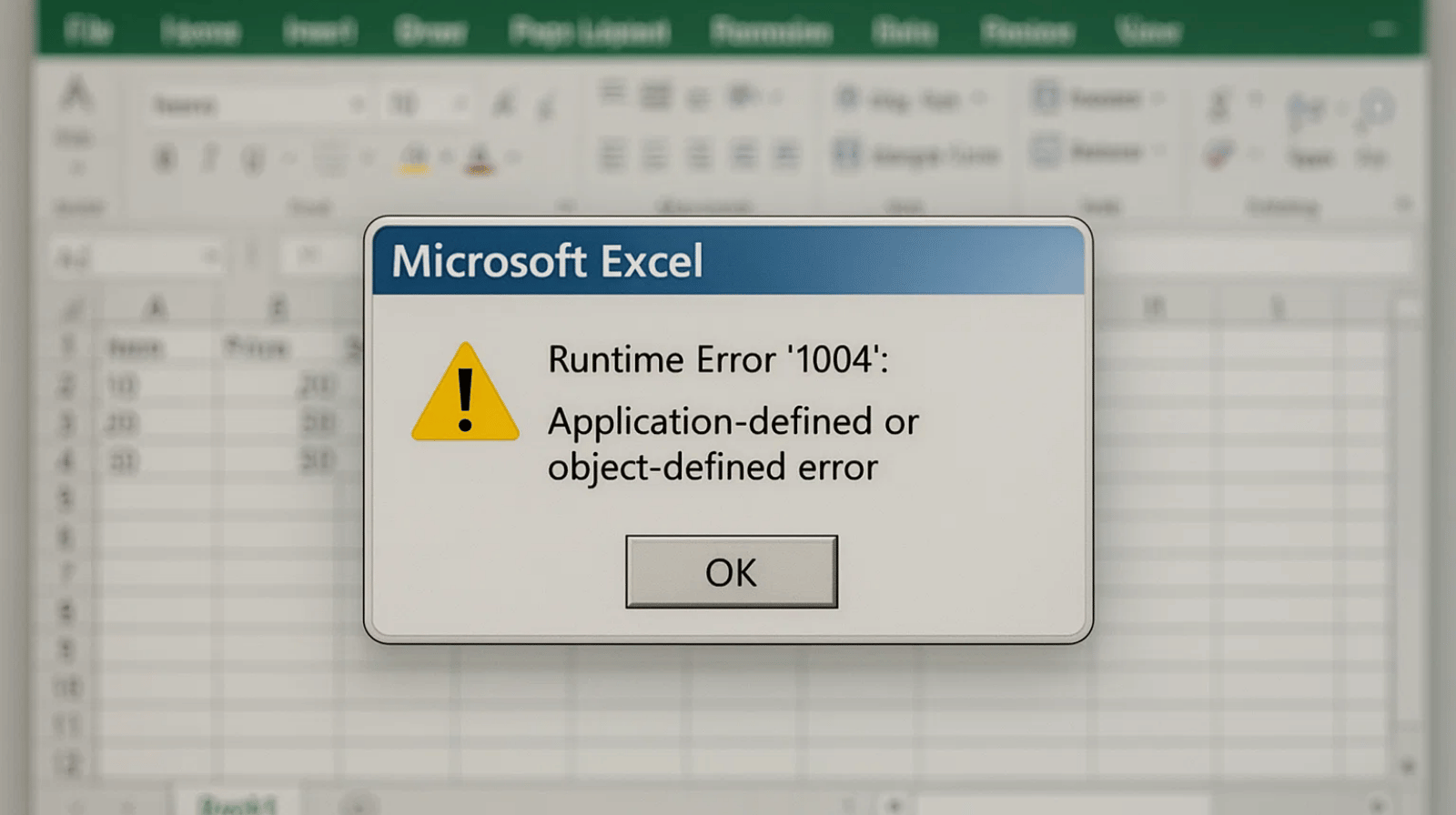Microsoft Excel is one of the most widely used tools for managing and analyzing data. However, like any software, it can sometimes throw unexpected errors. One common issue faced by users is Runtime Error 1004, which typically appears while running macros, saving files, or performing repetitive tasks. This error can disrupt your workflow, but the good news is that it can be fixed with the right approach.
In this guide, we’ll explain what Excel Runtime Error 1004 means, its main causes, and step-by-step solutions to resolve it.
What Is Excel Runtime Error 1004?
Runtime Error 1004 This is a Microsoft Excel VBA error. It happens when a macro or script attempts to address an object, file, or range it can’t locate or manipulate correctly. The error message is something like
- Runtime Error 1004: Application-defined or object-defined error”
- “Runtime Error 1004: Method ‘Range’ of object ‘_Global’ failed”
This error can appear suddenly, especially if you rely heavily on macros or large workbooks.
Common Causes of Runtime Error 1004
Several issues may trigger this error. Here are the most frequent ones:
1. Invalid or Corrupt Macros
If a macro refers to a range, sheet, or object that doesn’t exist, Excel fails to run it and throws this error.
2. File Compatibility Issues
Opening or saving Excel files created in older versions may cause conflicts, especially when using unsupported features.
3. Corrupted Workbook
A damaged or corrupted Excel workbook can easily trigger Runtime Error 1004 when accessed.
4. Large Data Sets
Excessively large ranges or incorrect references (e.g., “Range A50000” in older Excel versions) can cause Excel to crash.
5. Conflicting Add-ins
Third-party add-ins sometimes interfere with macros or VBA operations, leading to unexpected errors.
Solutions to Fix Excel Runtime Error 1004
Here are practical fixes you can try:
1. Check and Update the Macro Code
- Open the VBA editor (Alt + F11) and review your macro.
- Ensure all ranges and sheet names exist in the workbook.
- Replace references like Range(“A50000”) with Cells or Rows methods for better compatibility.
2. Save the File in a Different Format
- If the file was created in an older version of Excel, save it as a .xlsx or .xlsm (if macros are included).
- This eliminates compatibility issues.
3. Uninstall or Disable Problematic Add-ins
- Go to File > Options > Add-ins.
- Disable unnecessary add-ins and restart Excel to check if the error disappears.
4. Repair the Corrupted Workbook
- Use File > Open > Browse and select the workbook.
- Click the arrow next to the Open button and choose Open and Repair.
- Select Repair to fix as much of the workbook as possible.
5. Run Excel in Safe Mode
- Hold down Ctrl and open Excel, or run excel /safe from the command prompt.
- Safe Mode disables add-ins and customizations, helping you identify the root cause.
6. Split Large Workbooks
If your file contains massive data, split it into smaller files or use Power Query/Power Pivot for better handling.
Avoiding the Runtime Error 1004 in the Future
- Always back up your critical Excel files.
- Avoid using unnecessary add-ins, and make sure Excel is updated.
- Use good object references in macros. Stack the macros away.
- Use tables with structure instead of large unstructured ranges.
Conclusion
Excel Runtime Error 1004 may look intimidating, but it usually has a straightforward solution. Whether it’s correcting macro code, repairing a corrupted file, or disabling add-ins, one of the methods above should help you get back to work quickly. By following best practices—such as saving files in the right format and keeping your macros optimized—you can minimize the chances of this error occurring again.
Read: Why Is Excel Running Slow on Windows 11?
FAQs – Excel Runtime Error 1004
- ✅ Keep Excel updated
- ✅ Use structured tables instead of large, unstructured ranges
- ✅ Optimize your macros with proper references
- ✅ Save files in supported formats like .xlsx or .xlsm
- ✅ Back up your workbooks regularly

